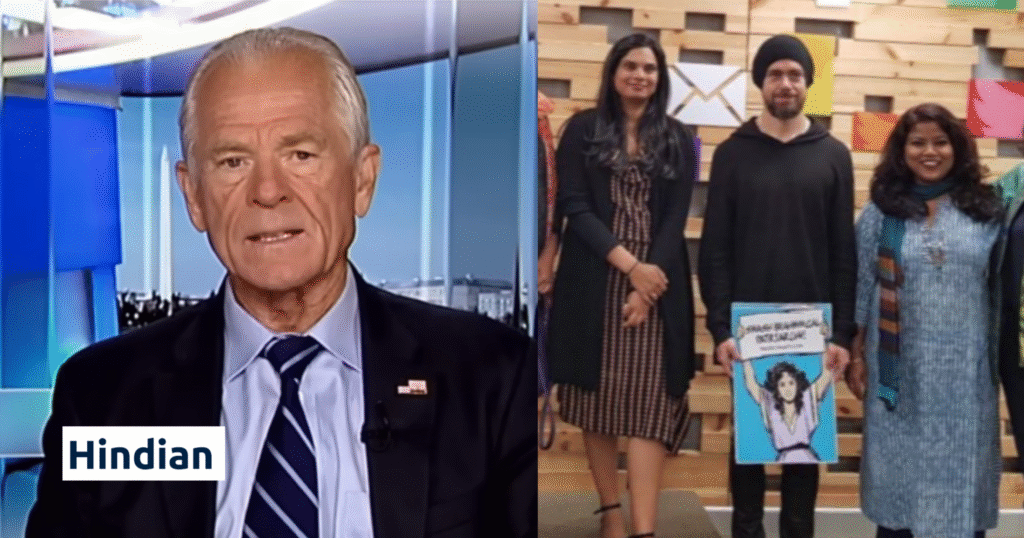In recent years, a disturbing trend has begun to take shape across the world, organized hostility against Brahmins. What once seemed like scattered voices of dissent in India has now become a global chorus. From secular activists to communists, jihadist organizations to Ambedkarite fanatics, and even those who proudly label themselves as “intellectuals,” all appear united in one cause: hatred toward Brahmins. This is not just an ideological battle within India but an international campaign, spreading across universities, think tanks, and political platforms worldwide.
Universities in India and abroad openly organize anti-Brahmin seminars, talks, and cultural fests, where slogans and graffiti like “Smash Brahminical Patriarchy” or “Down with Brahminism” are displayed with impunity. Anti-Brahmin propaganda is dressed up as progressive scholarship. Even worse, a dangerous narrative is emerging, that “Brahmins are the new Jews”, a phrase which suggests that just as Jews were vilified and scapegoated in Europe, Brahmins are now being demonized in South Asia and beyond.
Why Brahmins Are Targeted
The root of this animosity lies in the central role Brahmins have played in preserving and protecting Hindu civilization for millennia. Brahmins are not a caste of privilege but the custodians of knowledge, rituals, scriptures, and civilizational continuity. By safeguarding the Vedas, Upanishads, Puranas, and Dharma Shastras, they ensured that the flame of Hindu culture survived invasions, destruction of temples, and centuries of foreign rule.
Both Western powers and Islamist ideologues understand a bitter truth: if Hindu civilization must be weakened or destroyed, the first strike must be against Brahmins. By demonizing Brahmins, discrediting their scholarship, and dismantling their social authority, the deeper fabric of Sanatan Dharma can be unraveled. This is exactly what is happening today, with secular activists and leftist academics serving as unwitting allies of a larger anti-Hindu project.
The Placard Politics: “Smash Brahminical Patriarchy”
The slogan “Smash Brahminical Patriarchy” is now brandished at protests, university marches, and global feminist platforms. The phrase itself is a weaponized distortion, equating Hindu traditions with oppression, patriarchy, and regressive values. While real patriarchy exists in every society, the deliberate choice to tag it as “Brahminical” reveals the deeper intent: to vilify Brahmins as the root cause of all societal ills, making them convenient scapegoats.
This became starkly visible in 2018, when Twitter’s then-CEO Jack Dorsey was photographed holding a placard that read “Smash Brahminical Patriarchy” during his visit to India. The image went viral and sparked outrage among Hindus worldwide. For many, it was proof that Western elites were comfortable endorsing slogans that singled out Brahmins for demonization, even under the guise of social justice. Though courts later dismissed the legal challenges against Dorsey, the incident highlighted how normalized anti-Brahmin rhetoric has become in global activist and corporate spaces.
Such language has consequences. It dehumanizes Brahmins, reduces them to caricatures of privilege, and creates an atmosphere where hatred is normalized. This is not social justice, it is targeted prejudice.
Misappropriation of Brahmin Identity in the West
Interestingly, while Brahmins are demonized in India, the West has long admired the term. In Boston, the phrase “Boston Brahmins” was coined to describe the intellectual and cultural elite of New England, a class revered for their sophistication, scholarship, and leadership. Similarly, the word “pundit” (derived from Sanskrit Pandita, meaning learned scholar) is universally used to denote experts in any field.
This contradiction is telling: while global culture borrows prestige from Brahmin identity, the same class is vilified in its homeland.
Brahmins as Victims of False Convictions
Today, Brahmins are painted as criminals of history, accused of oppression, exploitation, and conspiracy. Yet, this is a crime they never committed in the manner portrayed. Societal inequalities in India have complex origins, but to single out Brahmins as the eternal oppressors is a dangerous oversimplification. It is historical distortion weaponized for political gain.
This distortion reached the international stage once again in 2025, when Peter Navarro, a former U.S. trade adviser, claimed on television that “Brahmins are profiteering at the expense of the Indian people” in reference to India’s oil trade with Russia. The remark sparked widespread condemnation in India, with many calling it casteist and dangerous. The Indian government officially rejected Navarro’s claims as misleading and inaccurate. Yet, the very fact that such rhetoric could emerge at the highest levels of Western commentary shows how deeply the narrative of Brahmin demonization has seeped into global discourse.
By turning Brahmins into villains, the global anti-Hindu lobby seeks to delegitimize Hindu civilization itself. For if the custodians of Dharma are discredited, the scriptures they preserved, the traditions they protected, and the civilization they upheld can all be dismantled with ease.
Persecution of Brahmins: From Invaders to Modern Ideologues
The hostility against Brahmins is not new; it has a long and painful history. Whenever invaders or hostile forces sought to weaken Hindu society, their first target was the Brahmin community, the keepers of knowledge, culture, and Dharma.
Islamic Invasions: From the early medieval period, Brahmins bore the brunt of Islamic conquests. Temples and Gurukuls were destroyed, and Brahmins were massacred for refusing to convert. The chronicles of Bakhtiyar Khilji record how entire centers of Brahmin scholarship, such as Nalanda and Vikramshila, were set ablaze, with teachers and students butchered. Aurangzeb, too, singled out Brahmins, imposing jizya and destroying temples they managed, recognizing that dismantling Brahmin influence would cripple Hindu resistance.
Christian Colonization: European missionaries identified Brahmins as obstacles to conversion. Jesuit and Protestant records often describe Brahmins as “crafty priests” who kept Hindus tied to “idolatry.” They actively worked to undermine Brahmin authority, branding them as agents of oppression to make Christian evangelism easier. British colonial policies further fueled this by selectively amplifying caste divisions and portraying Brahmins as exploiters in order to delegitimize Hindu society.
Modern India: The anti-Brahmin rhetoric that once came from foreign invaders is today echoed within India. Political movements in Tamil Nadu openly launched “Anti-Brahmin” campaigns in the 20th century, demonizing Brahmins as oppressors. Dravidian politics institutionalized Brahmin hatred through speeches, posters, and propaganda. Ambedkarite movements extended this narrative, and leftist-secular intellectuals normalized it in academia, media, and literature. Today, slogans like “Smash Brahminical Patriarchy” are celebrated on global platforms, carrying forward the same old agenda of vilifying Brahmins under new, progressive-sounding labels.
This layered persecution, first from Islamists, then from Christian colonizers, and now from secular-leftist forces within India, has ensured that anti-Brahmin sentiment is not only alive but expanding. What was once violent physical persecution has today transformed into intellectual and cultural demonization, but the intent remains the same: to erode the civilizational backbone of Sanatan Dharma by attacking its custodians.
The spread of Brahmin hate is not an accident; it is part of a larger global design to weaken Hindu civilization. From corporate elites like Jack Dorsey casually holding anti-Brahmin slogans to political figures like Peter Navarro accusing Brahmins of profiteering, the pattern is unmistakable. Western academics, Islamist radicals, and leftist ideologues, despite their own differences, find common cause in targeting Brahmins. The slogans, graffiti, and propaganda are not about justice but about erasure.
It is time Hindus recognize this reality. Brahmins are not the enemy; they are the backbone of Hindu civilization. To protect them is to protect the continuity of Sanatan Dharma itself.
Just as Jews once bore the brunt of scapegoating in Europe, today Brahmins are the new Jews, demonized not for crimes they committed but for the civilization they represent. And that civilization, stretching back thousands of years, is Sanatan Dharma.



